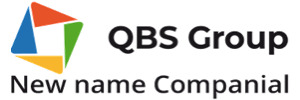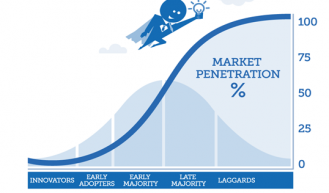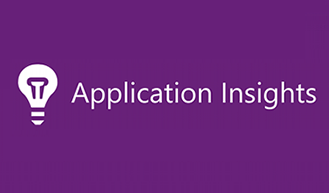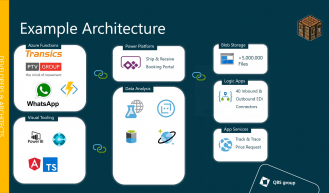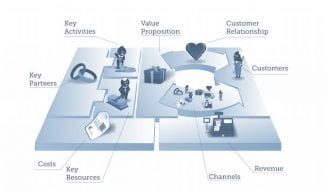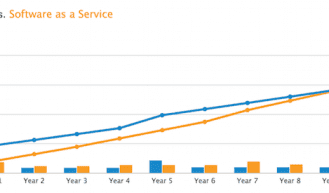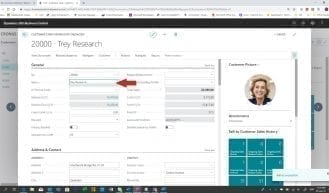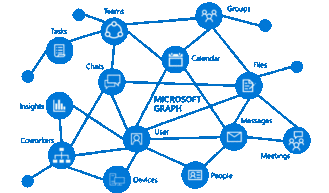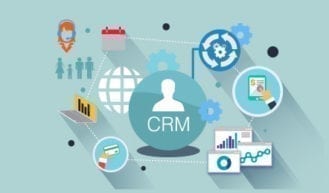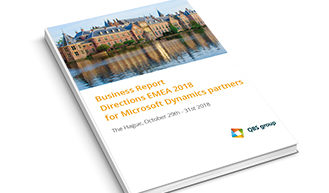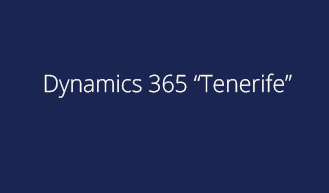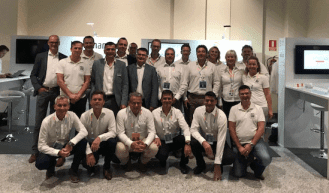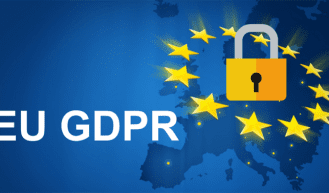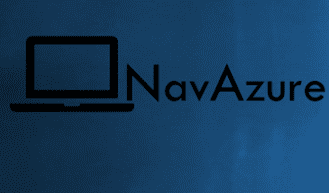Goodbye to NAV and Hello to 365 Business Central – with a German twist
Business Central
NAV
Just as the Dynamics roots in QBS run deep – so does the NAV (Navision) roots run deep in the Dynamics channel. As spring 2019 saw the final exit of the NAV name, this article from our guest blogger Hans Peter Bech, offers a bit of a historic perspective to those not familiar with the background of NAV, originating from the Danish company Navision Software A/S. At QBS group we know that the future belongs to Microsoft Dynamics 365 – and in ERP terms to Business Central – but we still think that the NAV name deserves a final “salute”. At QBS we stay committed to the success of the Dynamics partner channel – and if you are interested in exploring more of what it takes to establish a business on this modern business application for ERP functionality – then join our Dynamics 365 Business Central introduction webinar either on June 26 or July 18. We promise you won’t regret it!
Happy reading!
Don’t have time to read now? Click here if you want to download for later reading.
***************************
In October 2018 Microsoft retired the product name NAV and replaced it with Microsoft Dynamics 365 Business Central, which is available in on-premise, hosted and SaaS formats. It was not the end of the product, but a change in the naming convention.
When, in October 1986, IBM Denmark launched the financial management application, Navigator, for their Personal Goodbye To Navision And Hello To Business Central FinalComputer hardly anyone knew that the software was developed by the small Danish company PC&C. Backed by mighty IBM, Navigator became very popular in Denmark helping PC&C invest in continued product improvements.
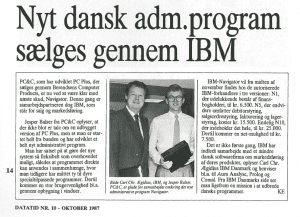
When Navigator 3.0 was launched in late 1990 it came with the Application Language (AL) facility, which was an SDK allowing resellers and customers to extend the functionality. The product was the first ever ERP-system for the PC that offered customization options. At the same time the Danish competitor Damgaard Data was preparing the launch of a new version of their successful product, Concorde, which offered similar facilities. Irritated that PC&C made it to market first, Damgaard Data decided to name their new version XAL (eXtended Application Language) insinuating that their product was a step ahead of Navigator. Only insiders noticed the gimmick and both products went on to achieve enormous success in their respective markets.
Breaking with IBM
At the beginning of the 1990s IBM and PC&C began to see the future very differently. IBM wanted to promote their OS/2 operating system, while PC&C had more confidence in Microsoft’s Windows platform. IBM noticed that while their hardware focused PC-business was under devastating attack from the compatibles, PC&C enjoyed high growth rates and increased customer and reseller loyalty. The early 1990s were the years when the market shifted its’ attention away from hardware and chose application software first. IBM Denmark, who understood the changes, made a takeover bid for PC&C but was turned down. This and other issues led to the breakup of the two companies in early 1994. Having parted with IBM, PC&C decided to go ahead with the development of a new financial management application that should be certified and released with a new version of Windows codenamed Chicago. The product was announced together with Windows 95 in August 1995. It was released for sale as Navision Financials at the Comdex show in Las Vegas in the fall of the same year where PC&C also announced a name change to Navision Software.
The timing of Navision Financials was perfect
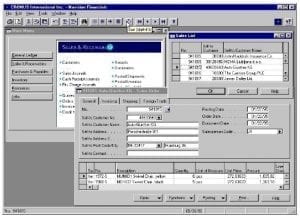 Since the beginning of the 1990s Navision Software had expanded internationally and with the immediate and enormous popularity of Windows 95, they had the distribution and partner network in place to deliver. Financials was the first financial management application to be certified for Windows 95 and they enjoyed the full impact of Microsoft’s global success.
Since the beginning of the 1990s Navision Software had expanded internationally and with the immediate and enormous popularity of Windows 95, they had the distribution and partner network in place to deliver. Financials was the first financial management application to be certified for Windows 95 and they enjoyed the full impact of Microsoft’s global success.
When Microsoft acquired Navision in July 2002 Financials accounted for 70 per cent of the company’s total revenue. After the Microsoft acquisition Navision Financials became Dynamics NAV keeping in touch with its origins.
Made in Denmark
Both Damgaard (XAL, C5 and AX) and Navision Software became recognized brands in Denmark where the two companies together had hundreds of partners and served more than half of all companies with financial management software. Due to the limited domestic market potential, both companies invested heavily in international expansion. However, making an ERP product cross national borders is no trivial endeavour. Each country has specific legal and market requirements, to which the software must adapt.
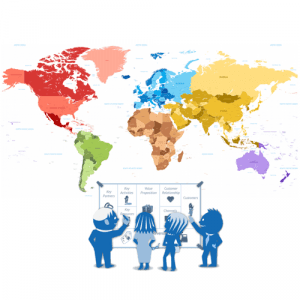
When Navision started the first international activity (in German) in 1991, they decided that localization should be performed by the NTR (National Territory Responsible). The decision was mainly based on the fact that PC&C with under 20 people (1991) didn’t have the resources to take on the work associated with the specifications of national requirements and the subsequent development of the code.
Distributing the responsibility for country localization made Financials essentially country specific, but the advantages of this model outweighed the disadvantage of not having an international product (like Damgaard Data’s XAL and AX). Navision Software was committed to serving the lower end of the SMB market, where companies were mainly operating in their domestic market anyway. This market segment did not have high demands for an international product with country specific features and multiple languages in the same code base. The Navision model proved to offer a fast-to-market approach and superior localization quality.
The Navision Internationalization Model
The approach used for their international expansion was primarily a joint venture model with Navision Software holding a minority stake. From the outside a country operation looked like a fully owned subsidiary, but under the surface each joint venture enjoyed substantial autonomy running the business as they saw fit.
The energy and effort invested by the joint venture partners in bringing Navision Financials to their markets were capitalized prior to the IPO in 1999, where 80 per cent of Navision Software’s revenue came from its international operations. By then the product was available in 30 countries.
Going Global on a Shoestring with a Start in Germany
When Navision Software merged with Damgaard in December 2000, Germany was by far the largest market for Navision Financials. However, the success in Germany didn’t happen overnight.
Allow me to conclude this tribute to Navision Financials with the historic details of how the German business venture started and evolved.
Alles Gute kommt von oben
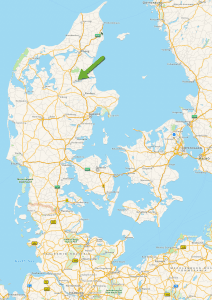
In the 1980’s Lars Damsgaard Andersen and Jesper Bowman worked respectively as CFO and Controller with a manufacturing company in North Denmark, where they used an accounting system on an IBM AS/400. In the latter half of the 1980’s they changed to Navigator on the PC-platform. Planning to implement a new financial system in their German subsidiary, Lars and Jesper studied various German software solutions, but did not find anything to their liking. They therefore proposed Navigator to their German staff. After a demonstration of the software in an English version the Germans were very excited; excited enough that Lars, Jesper and Per Grønfeldt, a technical consultant from the IBM reseller of the product, translated the program into German and put it into operation. It worked well and everyone was happy.
Meanwhile the company was acquired by a Swedish group, and Lars and Jesper lost the autonomy they enjoyed. They discussed with Per if there was a market for Navigator in Germany, and if they together could develop a business there. Per, who already had a good relationship with the two co-founders and developers Torben Wind and Peter Bang at PC&C, offered to inquire whether there might be enough interest for the distribution of Navigator in Germany.
The feedback was positive, and in August 1989 the trio – Lars, Jesper and Per – travelled to Copenhagen to present and discuss the idea with Jesper Balser, the CEO of PC&C. Spending a full day getting familiar with each other and discussing the opportunity proved that the chemistry between the four was really good. The trio returned to Jutland with instructions to prepare a business plan and find the funding needed to get started. They were also told of a new product in the development pipeline, on which a potential launch in Germany should be based.
Business Planning
The trio, who had full-time jobs, were now engaging in the research required to write the business plan and in finding private investors that would support their endeavours. After numerous discussions with PC&C in Copenhagen the outline of a framework for a future German distribution activity materialized and the corresponding agreements were signed. The German company, which was called Deltacom GmbH, got the exclusive rights to distribute Navigator, assuming that certain agreed sales targets were met. Deltacom would be responsible for the translation and localization of the software to comply with German legislation and market requirements, and the trio should assume full responsibility for and fund all activities associated with the distribution in Germany. PC&C, who made a small contribution to the initial funding and also made trade credit available, got a 20% share of the joint venture.
In the spring of 1990 Lars Damsgaard, Jesper Bowman and Per Grønfeldt quit their jobs and moved to Germany, and on July 1st of the same year they opened the doors of their new office in Hamburg. They commenced the work on making the product ready for the German market, and to avoid wasting precious time the trio used daytime hours driving up and down the German Autobahns visiting and demonstrating the product for potential distributors and customers all over the Bundesrepublik. The release of the new product Navigator 3.0 was delayed, so even when potential customers and resellers showed interest, Deltacom could not deliver. In late spring of 1991, the product was finally ready for the German market enabling much needed revenue and cashflow.
The go-to-market model was defined from the very beginning and was based on serving the customers through value added resellers (VARs). Although the recruitment of VARs and the subsequent sale to their customers was growing very slowly and fell short of any hopes, expectations, and also the minimum thresholds agreed to maintain exclusivity, the VAR model was maintained. PC&C in Copenhagen agreed to extend the exclusivity and gave the trio more runway to get the business off the ground.
The sluggish start was very tough on the cash flow, and the trio, working around the clock, had to tighten their belts, while PC&C in Copenhagen helped by further extending their credit. Even Deltacom’s German bank had to step in and accept overdrafts, but as they saw that things were going in the right direction, albeit somewhat slower than expected, they exhibited unusual patience.
The breakthrough
In mid-1993 the famous snowball effect finally kicked in. At that time, Deltacom had recruited a half hundred VARs, and some of these were part of nationwide networks with other partners that were now also showing interest. On top of the trio’s own market-oriented activities the word of mouth machine began to work, and sales now really took off. When PC&C launched Navision Financials certified for Windows in 1995 Jesper Bowman, Lars Damsgaard and Per Grønfeldt had both the organization and the VAR-base ready, and although the whole translation and adaptation effort had to be redone for the new product, market acceptance was very fast and the new product became a huge success.
We will not forget
As the NAV name disappears and erases the visual tracks back to Navision Financials, let’s not forget that Microsoft Dynamics 365 Business Central has a proud history. Thousands of people have toiled for years to make this product successful. When great products and great people come together at the right time, then great things may happen. NAV was such a great thing.
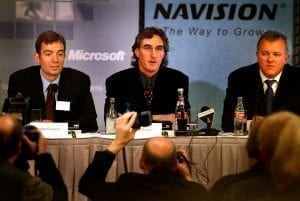
Preben Damgaard (left), Doug Burgum and Jesper Balser at the press meeting announcing Microsoft’s acquisition of Navision on 7 May 2002. (Photo: BJARKE ØRSTED/SCANPIX NORDFOTO 2002)
Goodbye to NAV and welcome to Microsoft Dynamics 365 Business Central. May the success continue.
Another blog you might be interested in: All you need to know about Microsoft Dynamics NAV coming to an end and becoming Microsoft Dynamics 365 Business Central

